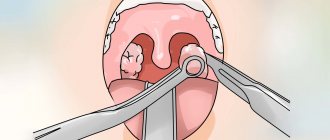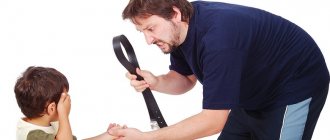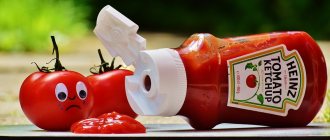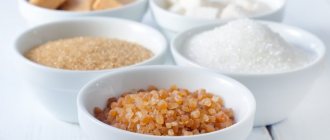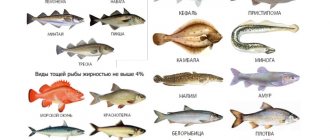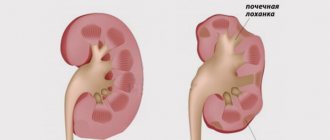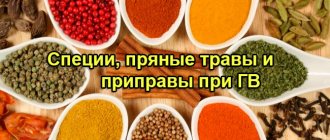What is pyelonephritis?
Pyelonephritis is an acute or chronic bacterial or viral disease of the kidney tissue, in which all inflammatory processes occur in the pyelocaliceal system. The disease affects both boys and girls of all ages.
It is believed that girls get sick more often than boys, but females tolerate the acute period of pyelonephritis much easier.
The pathogen enters the body through the bloodstream from any other source of infection (carious teeth, purulent wounds, cellulitis, abscesses, inflammatory diseases of the gastric and intestinal tracts). There is also a high probability of migration of microflora located on the surface of the genital organs with the urine flow. Next, the pathogenic agent is introduced into the pyelocaliceal system, where it infects kidney cells.
Increased temperature with pyelonephritis is an important clinical syndrome
Causes and predisposing factors of the disease
The cause of the development of the disease is a bacterial or viral pathogen that penetrates the weakened body of the child. Staphylococcal, streptococcal flora, Klebsiella, Proteus, E. coli, Pseudomonas aeruginosa, mycoplasma and ureoplasma, Echo, Coxsackie and Epstein-Barr viruses are the most common pathogens of pyelonephritis.
Staphylococcal infection occupies one of the leading positions in the development of pyelonephritis
Features of the course of the disease in children and adolescents
The child's body has many characteristics, due to which the course of the disease is somewhat different from the clinical picture of pyelonephritis in adults. Almost all kidney diseases occur at an early age and then manifest themselves many years later.
Many teenagers may be ashamed of their illness and not see a doctor for a long time: this can lead to the formation of serious complications.
Principles of choice of therapy
Depending on the severity, prevalence of the process, the presence of complications and the age of the child, approaches to the treatment of acute and chronic pyelonephritis differ slightly. There are several basic principles on which the treatment of pathology is based at all ages:
- Early administration of antimicrobial therapy. Even before the results of bacteriological culture arrive in the laboratory, the doctor prescribes complex treatment with antibiotics. This provides a lower risk of complications.
- Taking measures to detoxify and restore lost amounts of moisture helps restore acid-base balance in the body. The amount of fluid introduced into the body must exceed losses by at least twice: it is necessary to monitor this process daily.
- Non-steroidal anti-inflammatory drugs that injure the delicate mucous membrane of the gastrointestinal tract should be given under the cover of proton pump inhibitors: this will reduce the risk of developing gastritis and peptic ulcers of the stomach or duodenum.
- To reduce the risk of intestinal dysbiosis, it is recommended to take various bifidobacteria and drugs that stimulate metabolic processes in the body. Such medications are consumed immediately after the main meal, which promotes their better absorption.
- In newborns and infants, antibiotic therapy must be combined with herbal medicine. Combined treatment should consist of the rational use of both agents. This will ensure the least damage to other organs and systems.
Description of the pathology
Pyelonephritis is a nonspecific inflammation of the kidneys of an infectious nature. The most common pathogens are bacteria:
- staphylococcus;
- streptococcus;
- coli.
Initially, the disease in children always develops in an acute form with pain and a significant increase in temperature. If therapy is carried out incorrectly or untimely, inflammation develops into a chronic form.
According to statistical data, pyelonephritis ranks second in prevalence after ARVI in pediatrics. In addition, every second case of kidney inflammation in preschool children is a consequence of a cold that was not treated in a timely manner.
Pyelonephritis - nonspecific inflammation of the kidneys
Pyelonephritis is diagnosed three times more often in girls. This is due to the structural features of the female urinary system. The urethra in women and girls is shorter and wider. Pathogenic bacteria easily penetrate the bladder and then move to the kidneys.
Treatment of pyelonephritis in children
Therapy for pyelonephritis begins immediately after the child is diagnosed. He is placed in a hospital or sent for home treatment, where, if all necessary recommendations are followed, the baby will recover. Complex therapy for inflammatory kidney diseases includes the use of medications, traditional medicine, physiotherapeutic techniques, diet and nutrition.
A properly selected set of treatment and preventive measures reduces the risk of relapse of the disease to the minimum possible.
Drug therapy for pyelonephritis
Drug therapy for the treatment of inflammatory kidney diseases is prescribed only by a nephrologist in a hospital. Taking pills on your own is strictly prohibited: this can cause a number of serious disruptions in the functioning of various organs and systems. Many drugs have toxic effects on the kidneys and liver, making them unsuitable for use in children.
For the treatment of pyelonephritis in children, the following is used:
- Antibacterial drugs: Amoxicillin, Amoxiclav, Ceftazidime, Cefuroxin, Cefotaxime, Ketocef, Augmentin. The duration of antimicrobial therapy is at least two weeks. With the help of such drugs, it is possible to destroy the causative agent of infection, which will have a beneficial effect on the condition of the renal collecting system.
- Antiviral drugs: Orvirem, Cytovir, Oseltamivir, Zanamivir, Kagocel, Arbidol, Inosine Pranobex. Antiviral therapy is prescribed for a period of no more than a week. Medicines prevent the multiplication of viruses in kidney tissue, which helps to quickly eliminate clinical symptoms.
- Anti-inflammatory drugs: Nimesulide, Nise, Peroxicam, Nabumentone, Etodolac, Sulindac, Metamizole, Aceclofinac, Diclofenac, Ibuprofen. Thanks to this specific therapy, it becomes possible to relieve pain, get rid of spasms and discomfort in the back. The course of treatment is no more than one week.
- Detoxification therapy: Regidron, Reopoliglyukin, Polysorb, Enterosgel. Medicines in this group adsorb and remove waste and toxins from the body that accumulate during illness. These solutions should be taken for up to two weeks.
- Immunostimulants: Timalin, Timogen, Taktivin, Immunal, Reaferon. Activation of the immune system contributes to a milder course of the disease without unnecessary complications. Treatment lasts up to three weeks.
- Proton pump inhibitors help protect the mucous membrane of the stomach and intestines from the toxic and irritating effects of non-steroidal anti-inflammatory drugs. Most often used in pediatric practice are Omeprazole, Pantoprazole, Rabeprazole, Omez. Such treatment lasts exactly as long as the child is supposed to take anti-inflammatory drugs.
- Probiotics: Linex, Bifidumbacterin Forte, Enterol, Bifiform, Bifinorm. These drugs will help restore the balance of normal microflora that was disrupted by the use of antibiotics. The duration of the course will be two or more months.
Photo gallery: medications for the treatment of pyelonephritis in childhood
Amoxicillin is a broad-spectrum antibiotic that is often prescribed for pyelonephritis in childhood.
Orvirem is an antiviral drug in a form convenient for use in children
The use of Regidron helps restore salt and fluid losses
Nise is an anti-inflammatory and analgesic drug that can quickly eliminate discomfort in the lumbar region
Immunal activates the immune system to quickly suppress infection in the kidneys
Omeprazole will protect the gastrointestinal mucosa from the harmful effects of anti-inflammatory drugs
Linex will help restore intestinal microflora disturbed by antibiotics
Recommendations for diet and nutrition for kidney inflammation
Proper nutrition is the basis for maintaining the health of the genitourinary system of children and adolescents. Junk food stimulates the deposition of salts in organs and tissues and the formation of stones in the collecting system. That is why it is strictly forbidden to consume the following products:
- packaged juices with a lot of sugar;
- carbonated sweet drinks;
- chips, mass-produced crackers;
- industrial baked goods with rich cream;
- hot sauces and pepper;
- homemade pickles;
- fatty varieties of fish, poultry, meat;
- canned food and pates;
- smoked sausages;
- egg yolk;
- store-bought baked goods with meat;
- red caviar
Therapeutic nutrition for inflammatory kidney diseases is called diet number seven. The presence of edema syndrome, severe secondary infectious diseases or chronic diseases of other organs and systems is taken into account. The recommended number of meals is from four to six. The amount of salt should not exceed more than five grams per day.
It is acceptable to use for food:
- vegetable stews cooked with a little olive oil;
- fresh vegetables and fruits;
- green and black teas;
- mineral water;
- cereal bread or crispbread;
- dairy products;
- boiled fish;
- seafood;
- lean soups;
- stewed and boiled meat.
Photo gallery: recommended products
Vegetable stew is a complete dish that does not burden the kidneys and has a beneficial effect on digestion.
Whole grain bread is a source of fiber, which is necessary for improving the digestive system and strengthening the immune system.
Eating natural fermented baked milk daily will strengthen your child’s immune system.
Green tea has a diuretic effect, which has a beneficial effect on kidney function
Boiled meat is preferable for pyelonephritis than cooked in another way
Indications for surgical treatment and course of surgery
Surgery in childhood and adolescence is always a huge risk. The child’s body is complex and delicate, which makes it a universal target for the development of infections. Frail immunity is easily susceptible to harmful environmental factors, which is why the genitourinary system during pyelonephritis is especially sensitive to the action of other pathogenic microorganisms. This explains the high incidence of secondary purulent complications.
Indications for surgical intervention are usually:
- violation of the outflow of urine from the collecting system;
- large coral-shaped stone;
- phlegmonous damage to the pelvic tissue;
- kidney abscesses and carbuncles;
- long-term course of purulent pyelonephritis, which does not respond to therapy;
- purulent melting of the renal vessels and nerves;
- kidney shrinkage.
Kidney surgery in childhood and adolescence is performed only if there are serious indications
Progress of surgery:
- Dissection of the skin and subcutaneous tissue.
- Blunt separation of muscle tissue.
- Isolation of a kidney from the renal bed.
- Dissection of the renal capsule and isolation of the kidney.
- Removal of purulent areas and necrotic elements.
- Installation of special drains.
- Suturing the wound.
The recovery period after such surgery lasts up to a year. At this time, it is recommended to limit sports and educational activities, follow a diet and a certain regimen.
Physiotherapeutic techniques
Physical factors have been used to treat kidney disease since the mid-twentieth century. Currently, their effectiveness and safety have been proven: they are even used to treat children in their first days of life and weakened infants. With the help of such therapy, it is possible not only to prevent the occurrence of infection, but also to stimulate the body’s protective reserves to destroy it.
Most often, the following are used for complex therapy of pyelonephritis:
- Ultrasonic phonophoresis is a modern technique that allows the introduction of a drug into the human body using ultrasound. The drug enters the tissues through mechanical vibrations, which leads to faster and more accurate delivery. Regeneration processes are accelerated.
- Cryotherapy. This is a technique based on the effect of low temperatures on the human body. It is used to stimulate the neuroendocrine and immune systems, which regulate the activities of the entire body. The targeted effect of cold allows you to inactivate the inflammatory process in the kidney tissue.
- Electrophoresis is the introduction of a drug into the body based on the use of direct current. The drug is distributed throughout the bloodstream much faster, which determines its maximum absorption and delivery to the tubular system.
- Magnetotherapy is the effect on the patient’s body using magnetic fields of various frequencies. This technique is used to prevent relapse of the disease during the interictal period. Magnetic fields have the ability to excite and inhibit certain areas of the nervous system that regulate the activity of the genitourinary system.
Folk remedies
In cases of uncomplicated course, many doctors recommend starting therapy with folk remedies. Treatment can be carried out at home under the supervision of a nephrologist. Traditional methods are simple and at the same time effective, they do not have a negative effect on the growing body and are accessible. Before starting use, make sure that your child is not allergic to the components of medicinal plants.
The use of traditional medicine recipes does not exempt the child from taking antibacterial drugs: only they can affect the causative agent of the infection.
Recipes used for the treatment of pyelonephritis in children:
- Pour three tablespoons of bear's ear herb into two glasses of boiling water. Let it brew for twenty minutes, cool and strain. Give the child water twice a day after meals for a month. This medicinal plant has unique anti-inflammatory properties that soften the course of pyelonephritis.
- Add four tablespoons of ground oats to a liter of boiling milk. Cook over low heat for an hour, stirring constantly. Add a pinch of cinnamon, cool and serve to the child instead of an afternoon snack and during second breakfast for two weeks. Oat decoction gently relieves pain and spasms.
- Bearberry and flax in the amount of twenty grams are poured with a liter of hot water and left to infuse for at least one hour. When the resulting mixture has cooled, it is poured into small bottles and given to the child at night. This will help cleanse the kidneys of bacterial toxins. The course of treatment is from three to six months.
- Brew two sachets of chamomile with a glass of water. The resulting infusion should be quite strong, so you need to let it stand for at least three hours. It is recommended to give your child chamomile in the morning: it has anti-inflammatory properties and a slight diuretic effect. The duration of treatment will be from two to seven weeks.
Photo gallery: components of folk recipes for kidney inflammation
Chamomile will help gently relieve inflammation
Oats help relieve cramp pain
Bearberry has long been used for the treatment of pyelonephritis as an antibacterial agent.
Prognosis for treatment of pyelonephritis
Acute pyelonephritis in children of preschool and school age ends in complete clinical and laboratory recovery in eighty-five percent of cases. The mortality rate of acute pyelonephritis is less than two percent of the entire child population, which is associated with chronic autoimmune, immunodeficiency and hypotrophic conditions.
Visiting a doctor will help prevent relapse of the disease
In forty percent of children and adolescents, acute pathology can gradually turn into chronic: the inflammatory process in the pyelocaliceal system slowly progresses, sclerosis forms, narrowing of the main urinary ducts and kidney failure of various stages develops. That is why children with an early diagnosis of bilateral or unilateral pyelonephritis should visit a nephrologist within three or four years after the first attack of the disease. In parallel, such children must be shown to the dentist and otolaryngologist once every six months.
Possible complications and unpleasant consequences
If antibacterial, symptomatic and pathogenetic therapy is incorrectly selected, as well as if personal hygiene rules are violated, complications may arise in a young patient. Some of them are fairly easy to treat conservatively, while others will require a long stay in hospital or even surgery. To avoid the formation of such symptoms, consult a doctor at the first signs of illness.
The leading complications of pyelonephritis in children and adolescents usually include:
- acute kidney failure;
- impaired blood supply to the renal tissue (ischemia);
- chronic kidney disease;
- the formation of large and small pustules that merge into carbuncles;
- abscesses and phlegmons of the retroperitoneal space;
- disruption of the outflow of urine from the renal pelvis;
- uremic coma and intoxication with its own breakdown products of organic and inorganic substances;
- infectious-toxic shock;
- cyst formation and polycystic kidney disease;
- nephrogenic arterial hypertension of a symptomatic nature;
- shrinkage of one kidney;
- asymptomatic bacteriuria;
- chronicization of the process with its transition from one kidney to another;
- increased stone formation in the collecting system;
- prolonged spasm of the neurovascular bundle;
- spread of inflammatory processes to underlying organs and tissues (cystitis, urethritis, prostatitis).
Reasons for the development of inflammation
The development of the inflammatory process is caused by bacteria that can enter the kidneys through the urinary tract or blood. The disease is most often encountered by weakened children with reduced immunity. Often, pyelonephritis develops as a complication of acute respiratory viral infection or cystitis. Diseases such as tonsillitis, otitis, pneumonia, etc. can also cause inflammation of the kidneys. Chronic foci of inflammation in the oral cavity (for example, caries) can also provoke the development of acute pyelonephritis.
ARI can cause pyelonephritis
Improper hygienic care of the child plays a huge role in the development of the disease. Refusal to brush your teeth, dirt under your nails - all this can lead to infection in the body. If the child does not eat well and is rarely in the fresh air, the risk of developing inflammation increases. It is no coincidence that pyelonephritis is often diagnosed in children from disadvantaged families.
Congenital malformations of the kidneys or urinary tract can also trigger the development of the disease in acute form. If the normal excretion of urine from the body is regularly disrupted, it will not be possible to do without surgical intervention.
Children with chronic diseases are more susceptible to developing complications. Patients with the following pathologies are at risk:
- rickets;
- helminthic infestations;
- hypervitaminosis D;
- endocrine disorders.
The form of pyelonephritis directly depends on the state of the child’s immune system. If the body's defenses work well, inflammation can be quickly stopped without unpleasant consequences.
